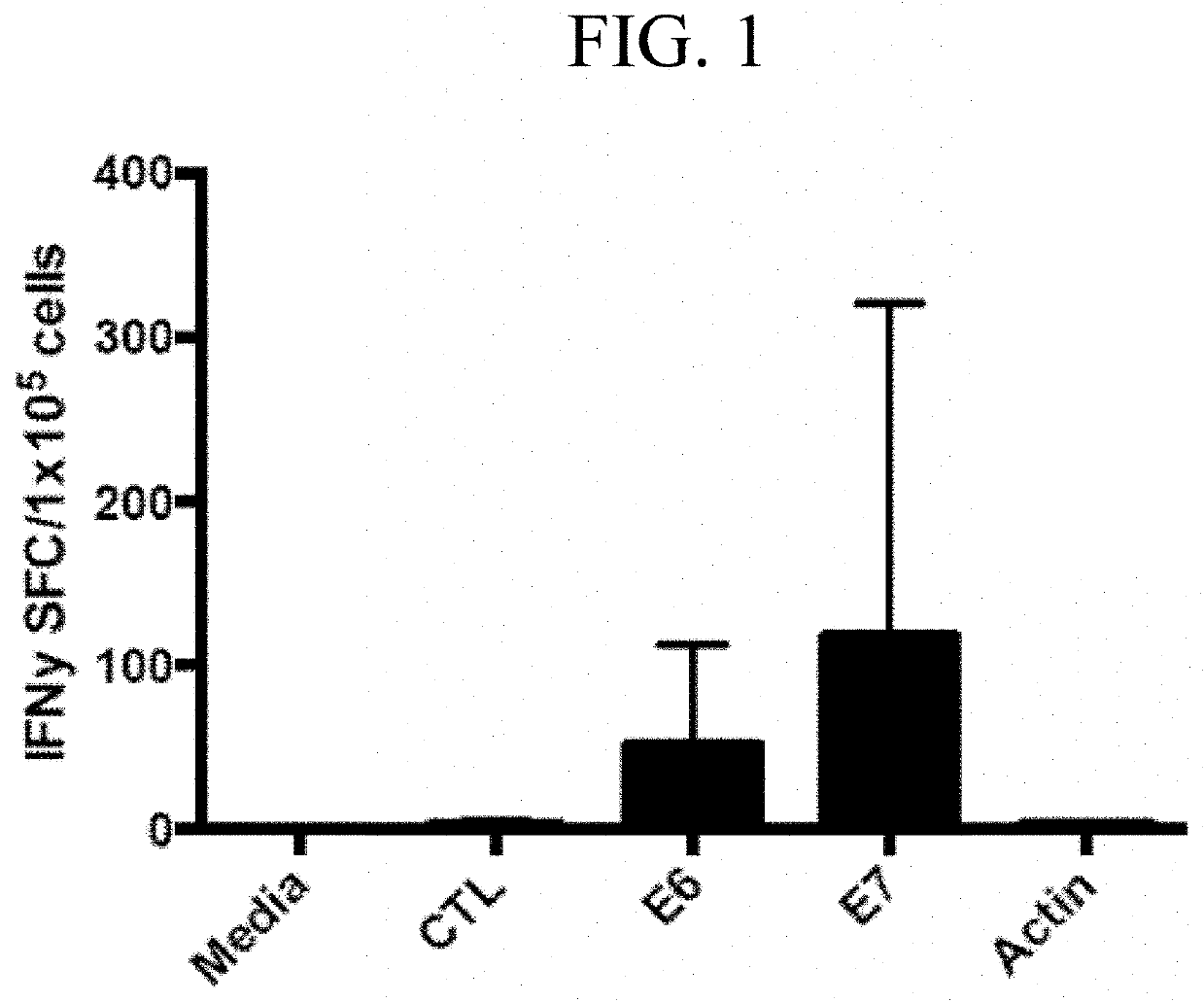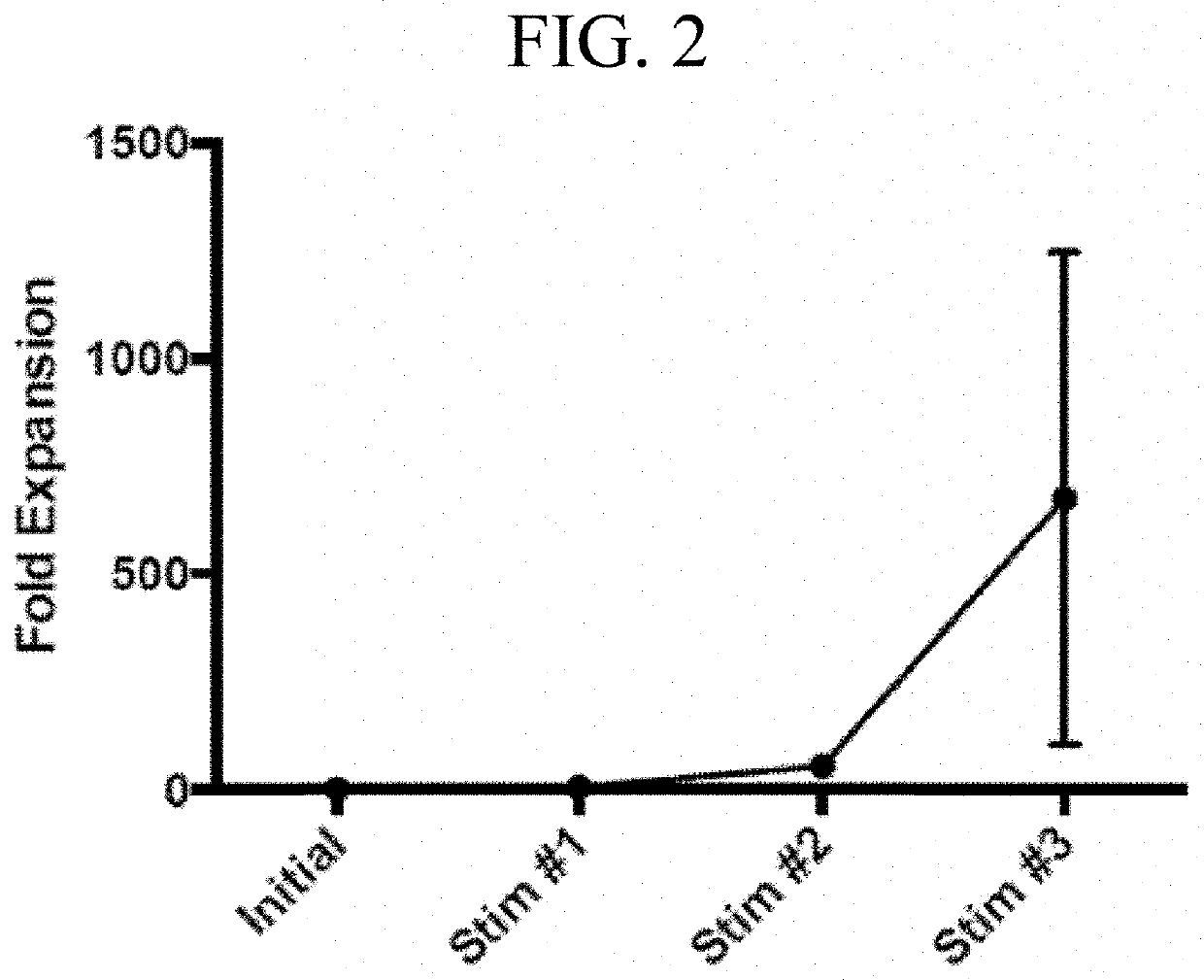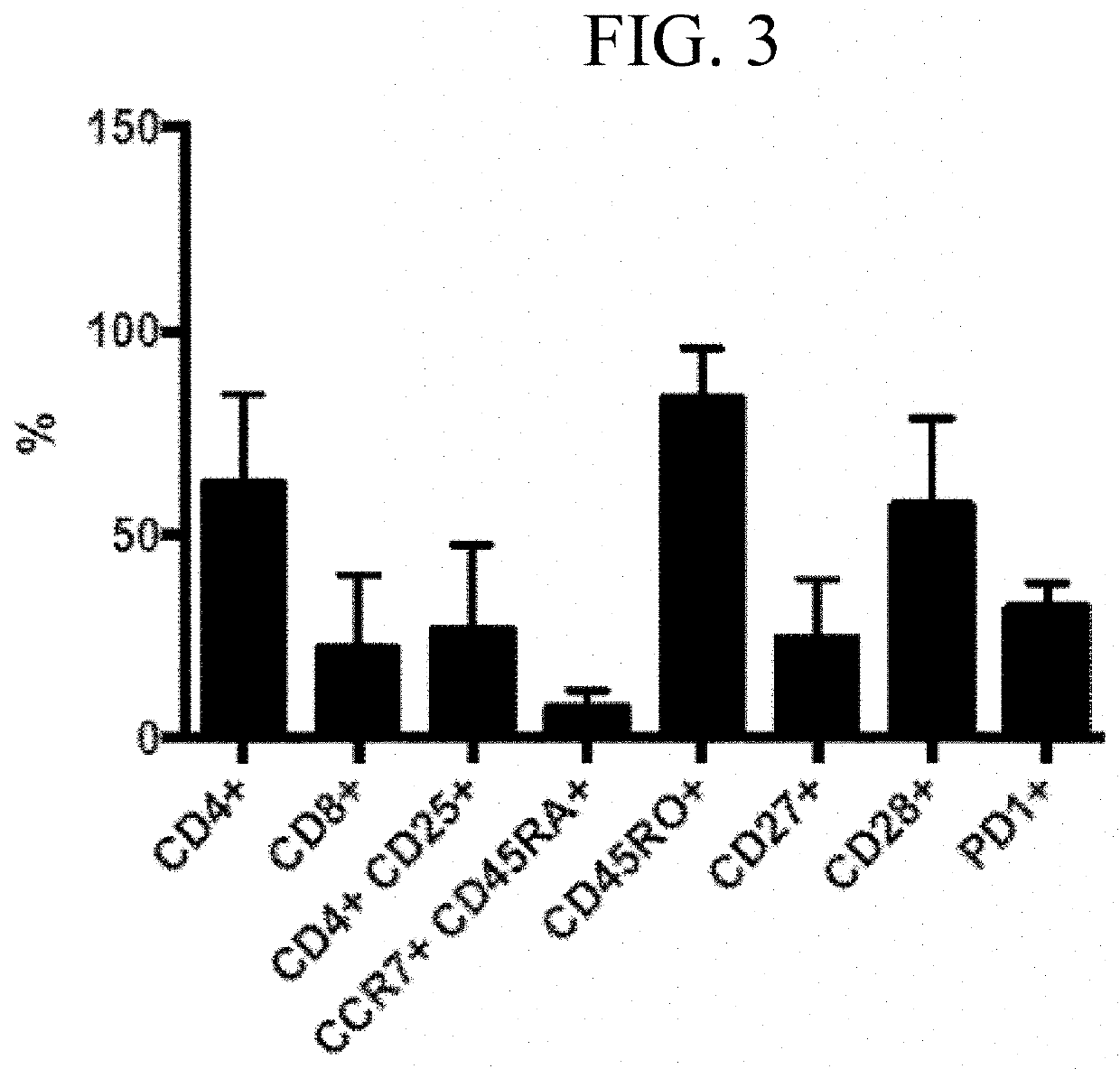Generating HPV antigen-specific t cells from a naïve t cell population
a technology of t cell population and hpv, which is applied in the field of producing antigen-specific t cells, can solve the problems of ineffective t cell based therapies based on expanding pre-existing memory t cell populations to viral antigens or epitopes, lack of memory t cells, and lack of immune memory of cord blood cells and other unprimed cells
- Summary
- Abstract
- Description
- Claims
- Application Information
AI Technical Summary
Benefits of technology
Problems solved by technology
Method used
Image
Examples
embodiments
[0059]Specific non-limited embodiments of the invention include the following:
[0060]The process according to the present invention is broad in scope. For example, it can be used to prevent conditions associated with HPV post allogeneic stem cell transplant, or it can be used to prevent relapse of HPV malignancies like cervical carcinoma. Specific non-limited embodiments of the invention are now further described.
[0061]In one embodiment, the invention comprises a process for producing an HPV antigen-specific T cell comprising (a) dividing mononuclear cells from any cell source containing naïve immune cells into several portions; (b) stimulating a portion of said sample with PHA or another mitogen and with IL-2 to produce ATCs activated T cells (“ATCs”) that serve antigen presenting functions during subsequent stimulations and optionally treating the ATCs with radiation or another agent to inhibit their outgrowth; (c) separating T cells and T cell precursor cells (e.g., non-adherent c...
example 1
Generation of HPV16 E6 / E7 Specific T Cells
[0192]Overlapping peptide libraries (15-mers overlapping by 11 amino acids) of HPV16-E6 (Protein ID P03126) and HPV16-E7 (P03129) were purchased from JPT Peptide Technologies (Berlin, Germany). Peptides were reconstituted in dimethyl sulfoxide (DMSO) (Sigma-Aldrich, St. Louis, Mo.).
[0193]Monocytes (CD14+)were isolated from PBMCs by CD14 selection using MACS Beads (Miltenyi Biotec, San Diego, Calif.) and cultured in 24-well plates (1×106 cells / well) in DC medium [CellGenix medium (CellGenix GmbH, Freiburg, Germany) and 1% alanyl-glutamine (GlutaMAX; Gibco Life Technologies, Grand Island, N.Y.)], with 800 U / mL granulocyte / macrophage-colony stimulating factor (GM-CSF) (R&D Systems, Minneapolis, Minn.) and 1000 U / mL IL-4 (R&D Systems).
[0194]Dendritic cells (DCs) were fed with GM-CSF and IL-4 on day 3.
[0195]On the morning of day 5, 1 ml of media was removed from the wells and 1 μL peptide mixture (E6 and E7) was added to each of the wells.
[0196]A...
example 2
Production Antigen-Specific T cells from Cord Blood
[0210]Non-adherent mononuclear cells isolated from cord blood (e.g., naïve T cells) were stimulated by contact with irradiated peptide-pulsed antigen presenting cells prepared from adherent cells in cord blood (e.g., monocytes, dentritic cells, etc.) and then by irradiated peptide-pulsed antigen presenting cells non-specifically from cord blood. This method was used to produce from cord blood populations, antigen-specific T cells recognized viral antigens.
[0211]Specifically, mononuclear cells were isolated from cord blood by centrifugation at 800×g for 20 minutes with little acceleration and brake and at room temperature on a Ficoll gradient. Approximately 10 million of the isolated mononuclear cells were reserved to produce non-specifically expanded T cells (antigen-presenting cells) also known as “Activated T Cells” or “ATCs”. In this case, Phytohemagglutinin (PHA) was used to stimulate the ATCs.
[0212]The remaining isolated mononu...
PUM
| Property | Measurement | Unit |
|---|---|---|
| concentration | aaaaa | aaaaa |
| concentration | aaaaa | aaaaa |
| concentration | aaaaa | aaaaa |
Abstract
Description
Claims
Application Information
 Login to View More
Login to View More - R&D
- Intellectual Property
- Life Sciences
- Materials
- Tech Scout
- Unparalleled Data Quality
- Higher Quality Content
- 60% Fewer Hallucinations
Browse by: Latest US Patents, China's latest patents, Technical Efficacy Thesaurus, Application Domain, Technology Topic, Popular Technical Reports.
© 2025 PatSnap. All rights reserved.Legal|Privacy policy|Modern Slavery Act Transparency Statement|Sitemap|About US| Contact US: help@patsnap.com



